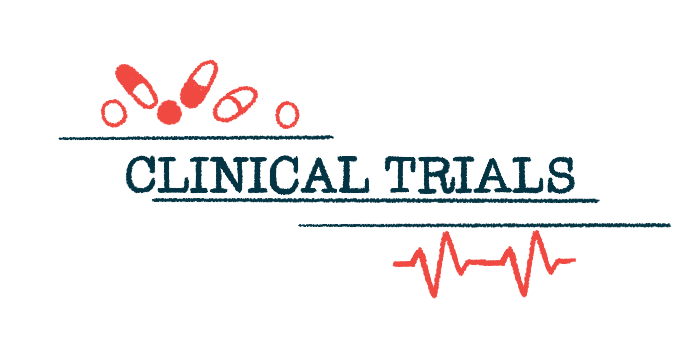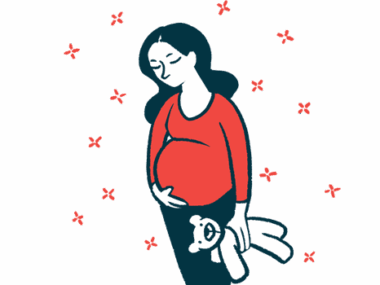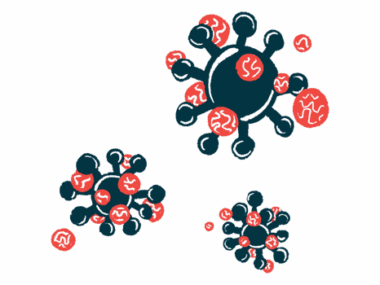Benefits of Livmarli for cholestasis sustained up to 2 years: Trial data
Data shows less itch, lower levels of bile acids and bilirubin
Written by |

Up to two years of daily treatment with Livmarli (maralixibat) controlled itch and reduced blood levels of bile acids and bilirubin, two markers of liver damage, among children and adolescents with progressive familial intrahepatic cholestasis (PFIC).
That’s according to two-year data from the placebo-controlled Phase 3 MARCH-PFIC clinical trial (NCT03905330) and its open-label extension study, MARCH-ON (NCT04185363).
Similar significant gains were seen among the patients first assigned to a placebo in MARCH-PFIC after they switched to Livmarli in MARCH-ON. The therapy, developed by Mirum Pharmaceuticals, was also associated with sustained benefits across certain patient subgroups, including specific genetic types.
The findings were shared as part of several presentations at the 56th European Society for Paediatric, Gastroenterology, Hepatology, and Nutrition (ESPGHAN) annual meeting, May 15-18, in Milan, Italy.
“We continue to build upon the strong body of evidence demonstrating Livmarli’s potential to provide long-term benefit to PFIC patients across key quality of life and liver disease parameters, as well as improvements in varied genetic types of PFIC,” Pam Vig, PhD, Mirum’s chief scientific officer and head of research, said in a company press release.
In cholestasis, the flow of the digestive fluid bile, which is produced by the liver and transported through bile ducts to the intestines, slows or stalls. People with cholestasis have progressive liver damage and pruritus, or itch, when bile acids accumulate in their liver and bloodstream. In PFIC, cholestasis is caused by mutations in different genes involved in producing or transporting bile acids.
What is Livmarli?
Livmarli is an oral suppressor of the ileal bile acid transporter, a protein that promotes bile acid excretion, in order to ease the symptoms of cholestasis that marks PFIC and some other liver diseases.
Its recent U.S. approval for PFIC patients, ages 5 and older, was supported by data from MARCH-PFIC. Results showed Livmarli eased patient-reported itch and lowered blood bile acid levels relative to a placebo over six months, with benefits observed across PFIC genetic subtypes.
The patients who completed the main trial were able to enter the ongoing MARCH-ON extension study, where they’re receiving Livmarli for up to four years.
In the oral presentation “Long-term Maintenance of Response and Improved Liver Health with Maralixibat in Patients with Progressive Familial Intrahepatic Cholestasis: 2-year Data From the MARCH-ON Study,” Richard J. Thompson, MD, of King’s College London, shared two-year findings that spanned MARCH-PFIC and MARCH-ON.
For the 47 patients originally assigned Livmarli on MARCH-PFIC, reductions in patient-reported morning itch observed in the main trial were sustained with up to two years, as were reductions in blood bile acid levels, declines in bilirubin, and improvements in growth.
The 41 patients who switched from a placebo to Livmarli on MARCH-ON saw similar benefits in the first six months after starting Livmarli as the other group had in the main trial, were then sustained up to the two-year mark.
No new safety signals for Livmarli were identified in the extension study. The most commonly reported adverse event was diarrhea (56% of all patients), which was usually mild and temporary. Adverse events became less frequent during MARCH-ON for patients on Livmarli since MARCH-PFIC’s start.
“These data suggest overall improved liver health with [Livmarli] treatment in patients with PFIC that can be maintained long term,” Thompson said in the presentation.
Thompson also shared data from the nine trial participants with PFIC type 3, also known as MDR3 deficiency, in the poster presentation “Maralixibat Leads to Improvements in Cholestatic Pruritus for Children with Progressive Familial Intrahepatic Cholestasis Due to MDR3 Deficiency: Data From the MARCH/MARCH-ON Trials.”
This PFIC type differs from the others in that it’s considered a cholangiopathy, where there is damage to the cholangiocyte cells that line the bile duct walls within the liver. It’s accompanied by elevations in gamma-glutamyltransferase (GGT), a liver enzyme.
Four patients received Livmarli throughout the studies and five were originally assigned a placebo.
Results from both trials showed that all the patients saw itch reductions on Livmarli and most saw reductions in blood bile acids. No consistent reductions in GGT levels were observed, however.
In another poster titled “Maralixibat Can Improve Cholestatic Pruritus in Children with Progressive Familial Intrahepatic Cholestasis Who Previously Underwent a Surgical Biliary Diversion: Data From the MARCH/MARCH-ON Trials,” Lorenzo D’Antiga, MD, of the Papa Giovanni XXIII Hospital, in Bergamo, Italy, presented findings from the eight trial participants who’d undergone surgical biliary diversion, a procedure wherein a new channel is created through which bile can exit the liver when there are problems with the bile ducts.
Five of the patients were assigned to Livmarli from the start, while three were first given a placebo. One from each group didn’t enroll in MARCH-ON.
The results varied, with only some patients seeing meaningful itch reductions and lowered bile acid levels with the oral therapy.







